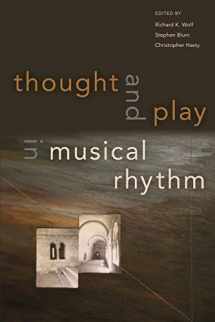
Thought and Play in Musical Rhythm
Book details
Summary
Description
Thought and Play in Musical Rhythm offers new understandings of musical rhythm through the analysis and comparison of diverse repertoires, performance practices, and theories as formulated and transmitted in speech or writing. Editors Richard K. Wolf, Stephen Blum, and Christopher Hasty address a productive tension in musical studies between universalistic and culturally relevant approaches to the study of rhythm. Reacting to commonplace ideas in (Western) music pedagogy, the essays explore a range of perspectives on rhythm: its status as an "element" of music that can be usefully abstracted from timbre, tone, and harmony; its connotations of regularity (or, by contrast, that rhythm is what we hear against the grain of background regularity); and its special embodiment in percussion parts. Unique among studies of musical rhythm, the collection directs close attention to ways performers and listeners conceptualize aspects of rhythm and questions many received categories for
describing rhythm. By drawing the ear and the mind to tensions, distinctions, and aesthetic principles that might otherwise be overlooked, this focus on local concepts enables the listener to dispel assumptions about how music works "in general." Readers may walk away with a few surprises, become more aware of their assumptions, and/or think of new ways to shock their students out of complacency.


We would LOVE it if you could help us and other readers by reviewing the book
Book review



